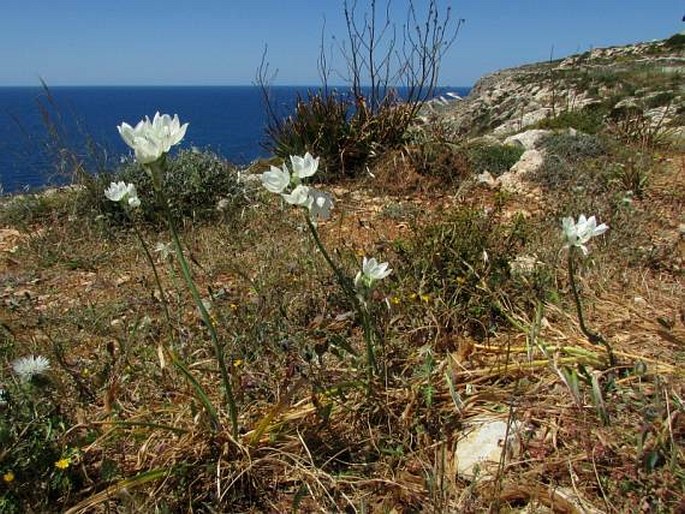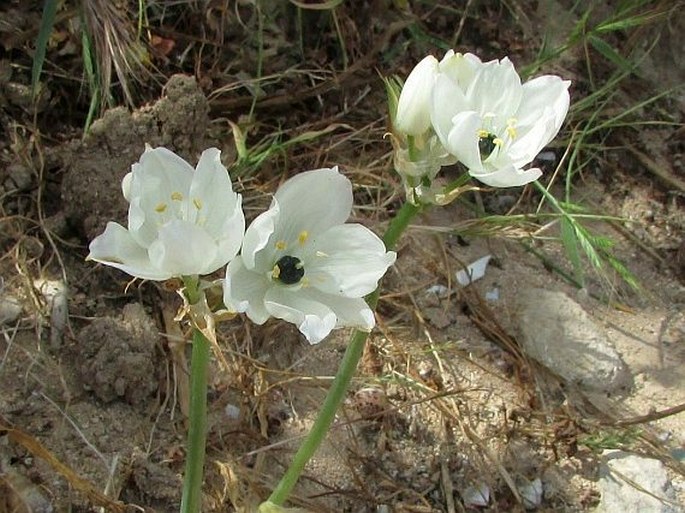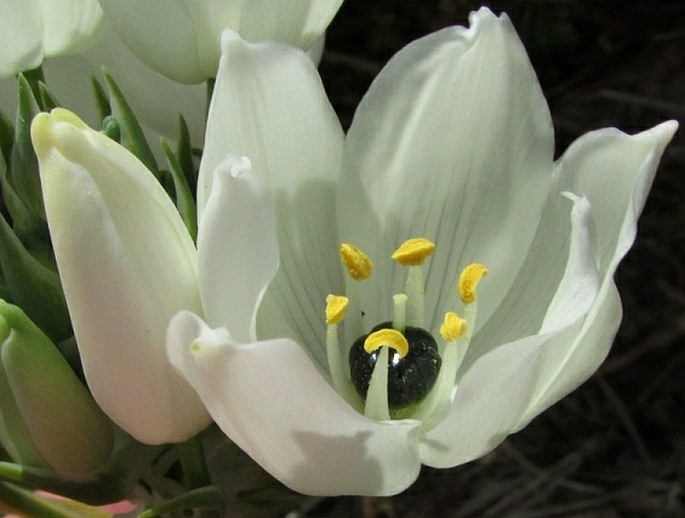Syn.: Caruelia algeriensis Jord., Caruelia arabica (L.) Parl., Caruelia hipponensis Jord., Caruelia macrocoma Jord., Caruelia ochroleuca Jord., Caruelia stenopetala Jord., Eliokarmos aureum Raf., Loncomelos latifolium (L.) Raf., Melomphis arabica (L.) Raf., Melomphis patens Raf., Ornithogalum arabicum var. algeriense (Jord.) Maire, Ornithogalum arabicum var. hipponense (Jord.) Maire, Ornithogalum arabicum var. macrocomum (Jord.) Maire et Weiller, Ornithogalum arabicum var. ochroleucum (Jord.) Maire et Weiller, Ornithogalum arabicum var. stenopetalum (Jord.) Maire et Weiller, Ornithogalum latifolium L., Stellaris latifolia (L.) Moench
Family: Asparagaceae Juss.

Distribution: Mediterranean species – from the Iberian Peninsula and Morocco through northern Algeria and Italy to Greece. It has been probably introduced to Madeira and the Canary Islands, definitely introduced to Israel and southern Australia.
Ecology: It grows in dry, sandy and rocky habitats. Blooms from April to May.

Description: Bulbous perennial herb, 20–80 cm tall. Leaves 5–7(–8), up to 60 cm long and 1–3 cm wide, glabrous. Inflorescence corymbiform; bracts shorter than pedicels; flowers 6–25, fragrant, perianth shallowly campanulate, 5–6.5 cm in diameter, white or cream, without green stripe on back; ovary obovoid to subglobose, blackish-violet. The fruit is a cylindrical capsule.
Use: It is grown as an ornamental plant, and is also used for cut flowers.




These images were taken in Malta, Golden Bay (April 18, 2014) and Hagar Quim (April 19, 2014).


